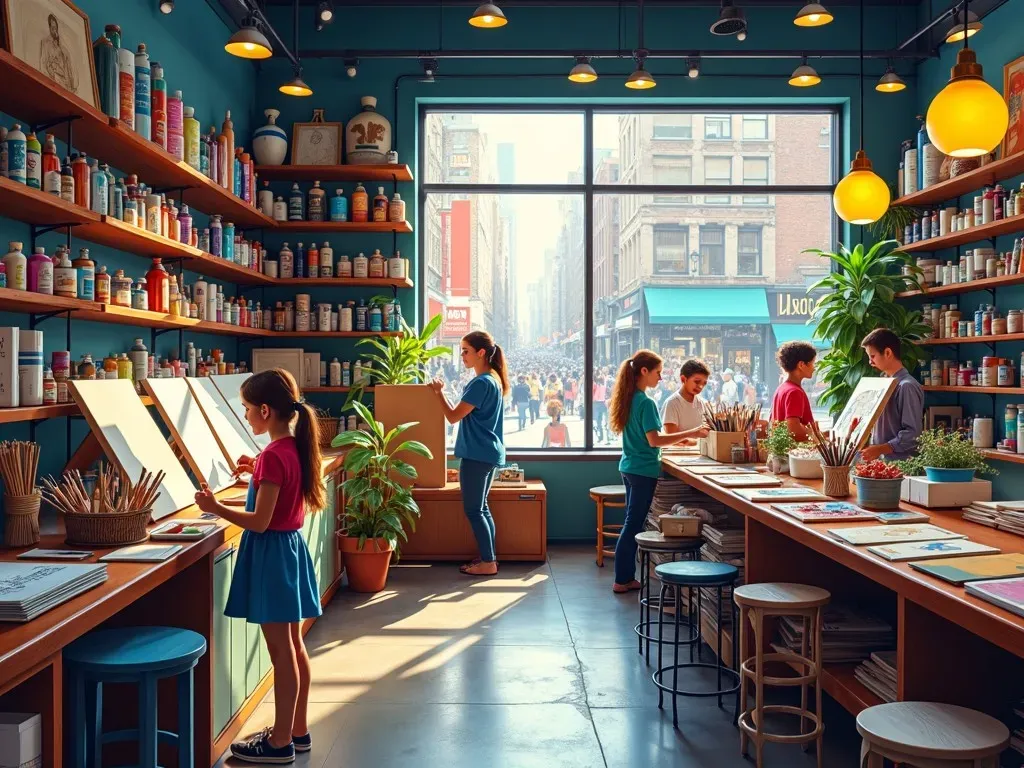When you’re on the hunt for an art supply shop in NYC, you’re diving into a vibrant world filled with creativity and Inspiration. Whether you are a professional artist or a budding hobbyist, the vast selection of art supplies available in New York City—ranging from paints, brushes, and canvases to unique crafting materials—is sure to meet your needs.
The Best Places for Art Supplies in Manhattan
New York City boasts a wealth of art supply shops, particularly in Manhattan, where creativity flourishes in every corner. Here’s a comprehensive overview of the top art supply shops in the city:
1. BLICK Art Materials
- Locations: SoHo, Union Square, Harlem
- Website: BLICK Art Materials
- Overview: Known for its extensive selection of quality art Supplies, BLICK caters to everyone, from professional artists to students. They offer regular promotions and host events, turning the shopping experience into an engaging community affair.
2. New York Central Art Supply
- Location: 62 East 13th Street, New York, NY
- Website: New York Central Art Supply
- Overview: Established in 1905, this shop is one of the oldest art supply stores in New York. It prides itself on a curated selection of high-quality art materials suited for both professionals and students.
3. The League’s Art Supply Store
- Location: 215 West 57th Street, New York, NY
- Overview: This shop supports local artists and students, making it a beloved spot for those looking for affordable yet quality supplies.
4. Soho Art Materials
- Location: 564 Broadway, New York, NY
- Overview: Known for its friendly staff and wide array of supplies, including specialty items for fine arts, Soho Art Materials is a must-visit.
| Shop Name | Notable Features | Location |
|---|---|---|
| BLICK Art Materials | Events, discounts, wide variety | Multiple locations |
| New York Central Art Supply | Historic, curated collection | East 13th Street |
| The League’s Art Supply | Supports students, affordable | West 57th Street |
| Soho Art Materials | Specialty items, friendly staff | Broadway |
Essential Art Supply Categories
Painting Supplies
Whether you’re an oil painter or an acrylic artist, the right materials can enhance your creative process. Here are some essentials you might find:
- Brushes: Ranging from fine detail to large wash brushes.
- Paints: Oil, acrylic, watercolor, and gouache.
- Supports: Canvas, wood panels, and watercolor paper.
Drawing Supplies
Drawing is fundamental to many art forms. Here’s what you should consider:
- Pencils: Graphite, colored, and charcoal.
- Pens and Markers: Fine liners, brush pens, and alcohol-based markers.
- Sketchbooks: Variety of paper types for different media.
Craft Supplies
For those who enjoy mixed media and crafts, art supply shops offer:
- Adhesives: Glue sticks, mod podge, spray adhesive.
- Cutting tools: Exacto knives, scissors, and rotary cutters.
- Embossing and Stamping Tools: Perfect for artistic embellishments.
Reference Video
Works of Art in Numbers: NYC Art Market Overview
The art market in New York City is a booming industry that reflects the creative pursuits of countless artists. Here are some key statistics highlighting the cultural impact of art supplies and stores in NYC:
| Year | Total Art Sales in NYC | Number of Galleries and Supply Stores |
|---|---|---|
| 2020 | $2.64 billion | 350+ |
| 2021 | $3.2 billion | 400+ |
| 2022 | $3.9 billion | 450+ |
As the numbers indicate, the demand for both art creation and consumption continues to grow, reflecting a thriving community of artists and art enthusiasts in New York City.
FAQs about Art Supply Shops in NYC
What are the best art supply stores in NYC?
Some of the best include BLICK Art Materials, New York Central Art Supply, and Soho Art Materials. Each offers a unique range of products catering to both professionals and amateurs.
Do these stores offer online shopping?
Yes, many major art supply stores, including BLICK and New York Central Art Supply, provide online shopping options for convenience.
Are there specific stores for specialty art supplies?
Absolutely! For example, BLICK specializes in fine art materials, while stores like The League’s Art Supply cater particularly to students and emerging artists.
Which areas have the most art supply shops?
Manhattan is known for its concentration of art supply shops, particularly in SoHo and the Union Square area.
Shopping for Art Supplies: Tips
When shopping for art supplies in NYC, consider these tips:
- Know Your Needs: Before stepping into a store, have a clear idea of what supplies you require.
- Compare Prices: Don’t hesitate to check multiple shops or browse online to find the best deals.
- Attend Workshops: Many art supply stores host workshops or art classes, which can provide valuable skills and insights into materials.
- Ask for Recommendations: Store employees are often artists themselves and can provide tailored advice for your projects.
By exploring the diverse options in NYC’s art supply shops, you can find everything needed to ignite your creativity and bring your artistic visions to life. With ample resources, professional guidance, and a community of fellow artists, your journey into the world of art has never been more accessible.
For further exploration of what NYC has to offer in terms of art supplies, check out the detailed guide on NYC.com.
